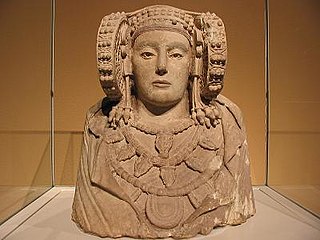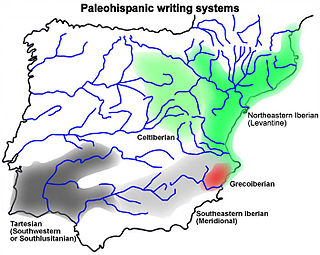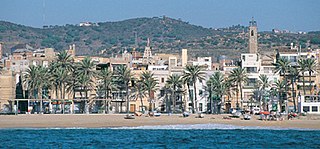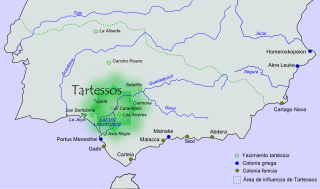The Laietani were an ancient Iberian (Pre-Roman) people of the Iberian peninsula (the Roman Hispania). They inhabited the area occupied by the city of Barcelona. One of the main thoroughfares of the city, Via Laietana, is named after the Laietani. They are believed to have spoken an Iberian language.

The Iberians were a set of people that Greek and Roman sources identified with that name in the eastern and southern coasts of the Iberian peninsula, at least from the 6th century BC. The Roman sources also use the term Hispani to refer to the Iberians.

In historiography, ancient Rome is Roman civilization from the founding of the Italian city of Rome in the 8th century BC to the collapse of the Western Roman Empire in the 5th century AD, encompassing the Roman Kingdom, Roman Republic and Roman Empire until the fall of the western empire. The civilization began as an Italic settlement in the Italian Peninsula, conventionally founded in 753 BC, that grew into the city of Rome and which subsequently gave its name to the empire over which it ruled and to the widespread civilisation the empire developed. The Roman Empire expanded to become one of the largest empires in the ancient world, though still ruled from the city, with an estimated 50 to 90 million inhabitants and covering 5.0 million square kilometres at its height in AD 117.

Hispania was the Roman name for the Iberian Peninsula and its provinces. Under the Republic, Hispania was divided into two provinces: Hispania Citerior and Hispania Ulterior. During the Principate, Hispania Ulterior was divided into two new provinces, Baetica and Lusitania, while Hispania Citerior was renamed Hispania Tarraconensis. Subsequently, the western part of Tarraconensis was split off, first as Hispania Nova, later renamed "Callaecia". From Diocletian's Tetrarchy onwards, the south of remaining Tarraconensis was again split off as Carthaginensis, and probably then too the Balearic Islands and all the resulting provinces formed one civil diocese under the vicarius for the Hispaniae. The name, Hispania, was also used in the period of Visigothic rule.
Contents
The Laietani minted their own coins, which bore the inscription laiesken in northeastern Iberian script that is interpreted in the Iberian language as a self-reference to the ethnic name of that people: from the Laietani or from those of Laie.

The northeastern Iberian script, also known as Levantine Iberian or Iberian because the Iberian script was the most frequently used, was the main means of written expression of the Iberian language. The language is also expressed by the southeastern Iberian script and the Greco-Iberian alphabet. To understand the relationship between northeastern Iberian and southeastern Iberian scripts, one should point out that they are two different scripts with different values for the same signs. However, it is clear they have a common origin and the most accepted hypothesis is that northeastern Iberian script was derived from the southeastern Iberian script. Some researchers have concluded that it is linked to the Phoenician alphabet alone, but others believe the Greek alphabet also had a role.
The Iberian language was the language of an indigenous pre-Migration Period people identified by Greek and Roman sources who lived in the eastern and southeastern regions of the Iberian Peninsula. The ancient Iberians can be identified as a rather nebulous local culture between the 7th and 1st century BC. The Iberian language, like all the other Paleohispanic languages but Basque, became extinct by the 1st to 2nd centuries AD, after being gradually replaced by Latin.


















